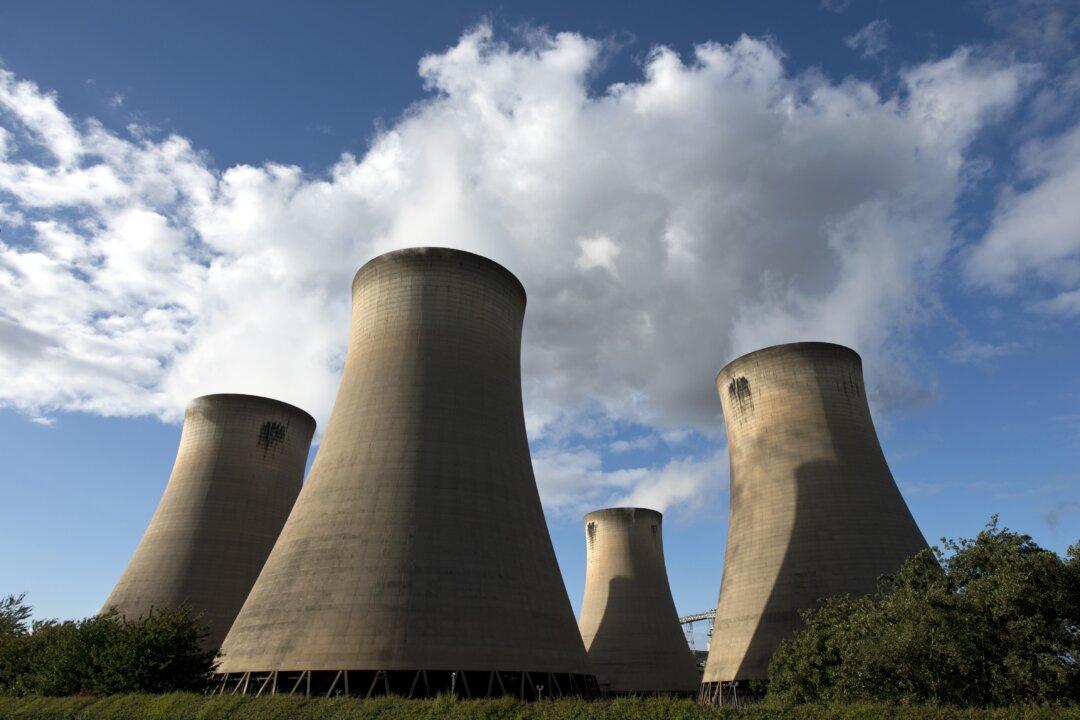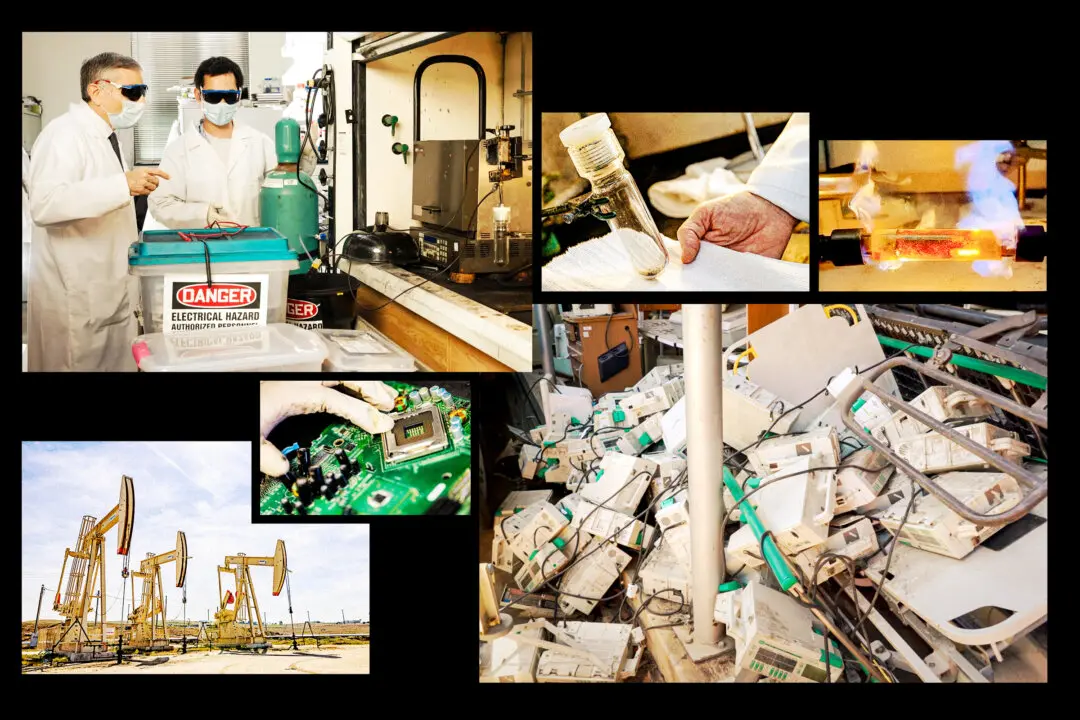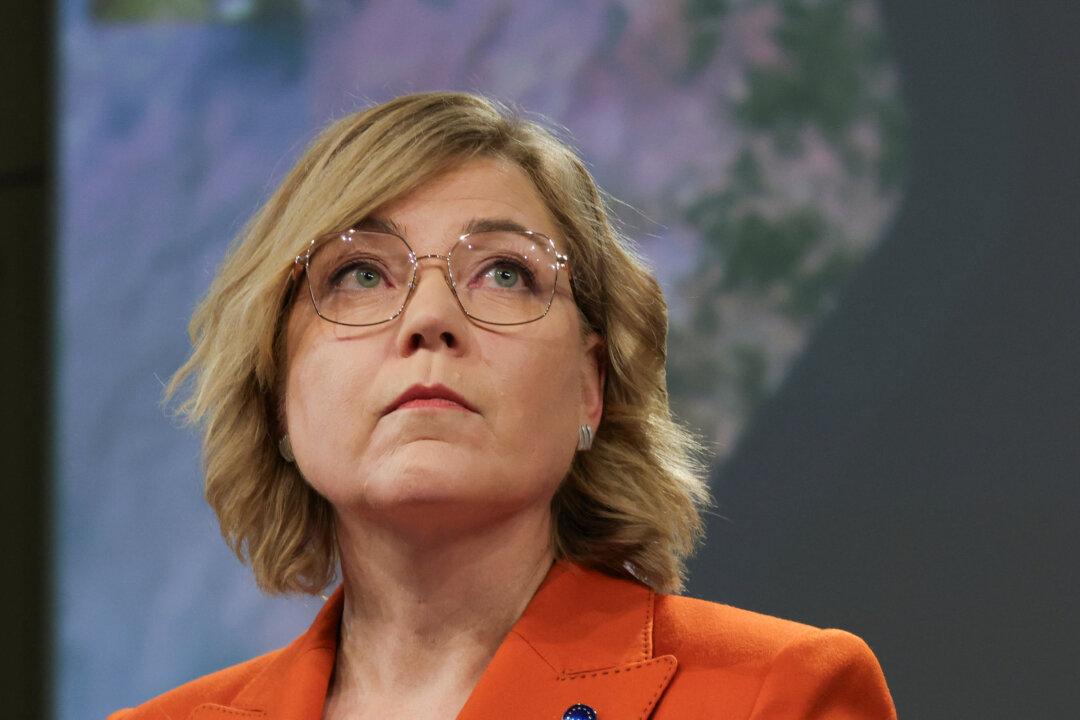
A view of the cooling towers of the Drax coal-fired power station near Selby, northern England, on Sept. 25, 2015. Oli Scarff/AFP via Getty Images
Two of the UK’s coal-fired emergency power stations have started supplying electricity to British homes for the first time this winter.
Amid a windless cold snap, Britain’s National Grid used coal-fired emergency units for the first time as electricity supplies tightened on Tuesday.





